Flying with a large dog like a Golden Retriever, German Shepherd, Labrador, or Great Dane isn’t as simple as tucking a Chihuahua in a carrier under the seat, but it’s definitely doable. You have two main options:
- Your large dog can fly in the cabin as a service animal if they’re trained to perform specific tasks for a disability.
- If your large dog is not a service dog, they’ll need to travel in the cargo hold, and you’ll need to pay airline fees.
We’ll explain both paths in full detail so you can make the best choice for you and your large, loveable pup.
Good News! All airlines still accept Psychiatric Service Dogs on all flights.
If you are interested in a Psychiatric Service Dog Letter, we would be happy to connect you with a licensed healthcare provider so they may assist you.
Flying With a Large Service Dog
If your large dog is a legitimate service dog, you’ve got the golden ticket to cabin travel. Unlike emotional support animals (which airlines no longer accept), true service dogs perform specific tasks that help with disabilities.
Service dogs are very often larger breeds. They work hard as guide dogs for the visually impaired, mobility assistance dogs that help with balance or retrieving items, medical alert dogs that can detect seizures or blood sugar changes, and psychiatric service dogs trained to interrupt panic attacks or remind you to take medication.
Service dogs can lie at your feet in the cabin rather than traveling alone in cargo, and you don’t have to pay any pet fees.
Booking Your Flight with a Larger Service Dog
Here are the steps to take when flying with a large service dog:
- Book your flight
Inform your airline when you’re booking that you have a service dog. If you’re booking online, you’ll see this in the special requests or accessibility tabs; otherwise, call your airline. - Submit the required documentation
Complete the DOT Service Animal Air Transportation Form and submit it at least 48 hours before your flight. - Prepare for the flight
Practice having your dog lie quietly in a small space for several hours and exercise thoroughly before travel day. - Request seating accommodation
It doesn’t hurt to ask to sit next to an empty seat or an upgrade so your larger service dog has more room. - Abide by inflight rules
Keep your dog positioned at your feet, not in the aisle or neighboring seats.
Remember that flying with a service dog is a legal right, but it comes with the responsibility to ensure your large dog doesn’t interfere with cabin safety or other passengers’ comfort.
Tips for Flying with Large Service Dogs
Flying with a large service dog presents unique challenges that handlers of small service dogs don’t face:
Space limitations: A 75-pound German Shepherd takes up significantly more floor space than a 15-pound service dog. In economy seating, your dog may need to maintain a tucked position for hours, which can be physically demanding.
Visibility factor: Large service dogs draw more attention, leading to more questions and interactions from airline staff and other passengers. You’ll need to be prepared to advocate for your rights while maintaining boundaries.
Physical navigation: Moving through narrow airplane aisles, tight bathroom spaces, and crowded terminals requires special training and commands for large service dogs.
Temperature concerns: Large breeds, especially those with thick coats, can overheat more easily in crowded cabin environments where air circulation may be limited.
Here are some tips to help deal with these challenges:
- Specialized tuck commands
Train your dog to tuck completely under the seat in front and curl tightly against your legs. Practice the “airplane tuck” position specifically, which is more compact than a standard tuck. - Service dog accessories
Use service dog tags, vests, or ID cards so it is obvious your dog is on duty. - Bulkhead advantages and disadvantages
Bulkhead rows offer more floor space but no under-seat storage. This is ideal for dogs over 60 pounds, but you lose storage space for your items. - Aisle vs. window
Window seats provide a barrier on one side, reducing the chance of your dog being stepped on, while aisle seats make bathroom breaks easier but expose your dog to cart traffic. - Exit row restrictions
Service dogs are prohibited in exit rows, regardless of size or training level.
Large Service Dog Breed-Specific Advice
Different service dog breeds have different needs during air travel:
Large retrievers (Labs, Goldens): These popular service dogs tend to run hot. Request an air vent directed at their space and bring cooling mats for pre-boarding and layovers.
German Shepherds: Their alert nature can make cabin noises more stressful. Consider specific sound desensitization training before flying.
Standard Poodles: Their height can make proper tucking challenging. Train specific chin-rest positions for extended flights.
Dobermans and slender breeds: Their limited body fat makes hard surfaces uncomfortable on long flights. Bring a thin, dense foam pad that doesn’t add much bulk.
Giant breed service dogs (Great Danes, Newfoundlands): These may require purchasing an additional seat, as many airlines have policies stating service dogs must not extend into the aisle or other passengers’ foot space.
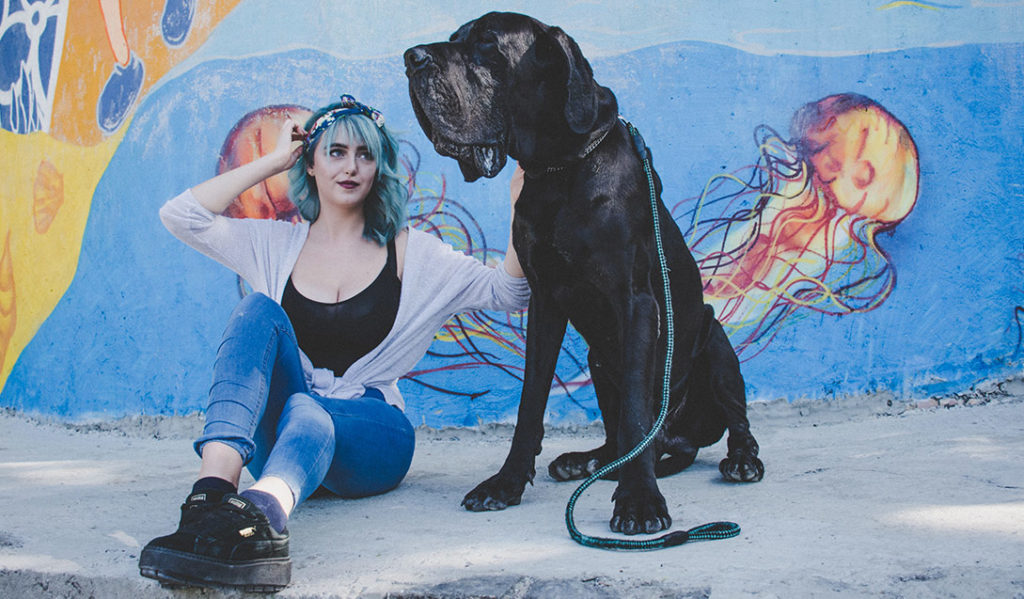
Flying Large Dogs in Cargo
For most large dog owners who aren’t service dogs, cargo is the reality of air travel. It’s not ideal, but pet cargo areas are pressurized and temperature-controlled — much better than they were years ago.
Not all airlines allow dogs in cargo. There are also temperature restrictions: if it’s below 45°F or above 85°F at any point on your journey, your pet likely can’t fly.
Certain breeds face additional hurdles. Airlines often restrict short-nosed breeds like Boxers or Mastiffs due to breathing concerns. Most carriers cap weight at around 100–150 pounds, including the crate, which can be a deal-breaker for the largest breeds.
Large Pet Dog Booking Process and Pet Fees
Booking a flight with your furry giant requires some extra steps:
- Research before you book
Airline pet policies vary dramatically and change frequently. Call the airline directly to confirm their most current policy. - Call the airline’s cargo department directly
Many pet cargo bookings can’t be made online — you’ll need to speak with the cargo department, which is separate from passenger service. - Book early
Many flights limit pet cargo spots to just 1–2 animals, so make sure to reserve well in advance.
When you call, have your dog’s stats ready: breed, age, weight, and crate dimensions. You’ll also need your travel dates and routes.
Here are the fees for pet cargo transportation on major US airlines:
- Alaska Airlines:
$150 each way for pets in the baggage compartment ($100 for active US Military or flights wholly within Alaska). There’s a weight limit of 150 pounds including the carrier. - American Airlines (PetEmbark):
Fees vary based on weight, distance, and other factors. American Airlines (PetEmbark) uses a rate calculator that determines pricing based on your specific route and pet’s size. For checked pets, American Airlines only accepts active-duty military members with official transfer orders. - Hawaiian Airlines:
$225 one way for flights between Hawaii and North America, or $60 one way for inter-island flights. - Delta Air Lines and United Airlines:
Both carriers currently have eliminated regular pet cargo service for non-military customers. For military members with permanent change of station orders, fees typically range from $200-500 depending on size and destination.
Additional charges may apply for oversized crates, temperature-controlled handling, and extended connections. For international travel, fees are generally higher, and additional documentation is required.
Be aware that many airlines now have seasonal restrictions as well. During summer months (May through September), many carriers restrict pet cargo transport to and from hot-weather cities like Phoenix, Las Vegas, and Palm Springs to protect animals from heat exposure.
What to Pack for Your Large Dog
Your large dog needs specialized gear for their flight in cargo. Here’s what should make your packing list:
- Airline-approved crate:
Size matters — dogs 70–90 lbs need a minimum of 40″ L x 27″ W x 30″ H; dogs 90–125 lbs need a minimum of 48″ L x 32″ W x 35″ H. Metal bolts and tie-down holes are required. - Water and food setup:
Pack a spill-proof water dispenser with at least 32 oz capacity. Attach food in a spill-proof container that your dog can’t knock over. - Comfort and safety items:
Include your worn t-shirt for familiar scent, industrial-strength absorbent pads, and zip ties for additional door security (powerful breeds can sometimes push against standard latches). - Documentation packet:
Create a waterproof packet with health certificates, vaccination records, and your contact information. Attach one copy to the crate and keep another with you. - Airport day accessories:
Bring a heavy-duty harness and leash system that won’t snap under the strength of your large breed, plus a collapsible water bowl for pre-boarding hydration.
Avoid packing toys that could become choking hazards, and skip any new treats or foods that might upset your dog’s stomach.
Airport Day Tips
When the big day arrives, your large dog needs special handling:
- Arrive early — 3–4 hours for international flights. Cargo processing for large dogs takes significantly longer than standard check-in.
- Most people don’t realize that pet cargo facilities are often completely separated from passenger terminals. You might need to drive several miles to a different building, so plan your transportation accordingly. Trying to manage a nervous 90–pound dog, a massive crate, and your luggage in an Uber is a challenge worthy of an Olympic event.
- Bring help if possible. One person can handle the paperwork while another manages your dog. If you’re flying solo, consider using a freight dolly or airport cart specifically for the crate.
- Before entering the airport, give your dog one last chance to relieve themselves. Many airports now have dedicated pet relief areas, but they’re often small spaces designed with tiny dogs in mind, not your Labrador.
- At your destination, verify where you’ll retrieve your dog — it’s typically at the cargo facility, not baggage claim. These facilities often close earlier than the main terminal, so have a backup plan if your flight is delayed.
Health and Safety Considerations
Large dogs face unique health challenges when flying that small breed owners don’t need to worry about. Understanding these risks can help you make informed decisions.
Breed-Specific Concerns
Different large breeds have different physiological needs and risk factors that require specialized preparation for air travel:
Deep-Chested Breeds
German Shepherds, Dobermans, Standard Poodles, Great Danes, and Weimaraners have deep, narrow chests that put them at significantly higher risk for gastric dilatation-volvulus (bloat) — a potentially fatal condition where the stomach twists.
Travel considerations:
- Feed multiple small meals instead of one large meal in the days before flying
- No food for 4-6 hours before travel, but small water amounts are okay
- Avoid any exercise immediately after eating
- Consider a slow-feeder bowl for any meals at your destination
- Watch for symptoms after landing: restlessness, excessive drooling, or unsuccessful attempts to vomit
Brachycephalic (Short-Nosed) Breeds
Boxers, Mastiffs, American Bulldogs, and Bull Terriers have shortened airways that make breathing difficult, especially under stress or in warm conditions.
Travel considerations:
- Many airlines ban these breeds entirely from cargo travel — check policies before booking
- If allowed, fly only during cool months and on direct flights
- Request a veterinary evaluation specifically for air travel fitness
- Consider a cooling vest or bandana for airport transit
- Use a crate one size larger than the standard requirement to allow for better air circulation
- Monitor closely for signs of heat stress: excessive panting, blue/purple gums, or lethargy
Double-Coated Northern Breeds
Huskies, Malamutes, Bernese Mountain Dogs, and Newfoundlands, have thick double coats that make temperature regulation challenging.
Travel considerations:
- These breeds can easily overheat in cargo holds, even in temperature-controlled conditions
- Avoid flying these breeds in summer months entirely
- Never shave these dogs before flying — their coats actually help with temperature regulation
- Use cool packs (not directly touching the skin) for airport transit
- Pack a high-velocity brush for daily grooming at your destination to manage shedding in new environments
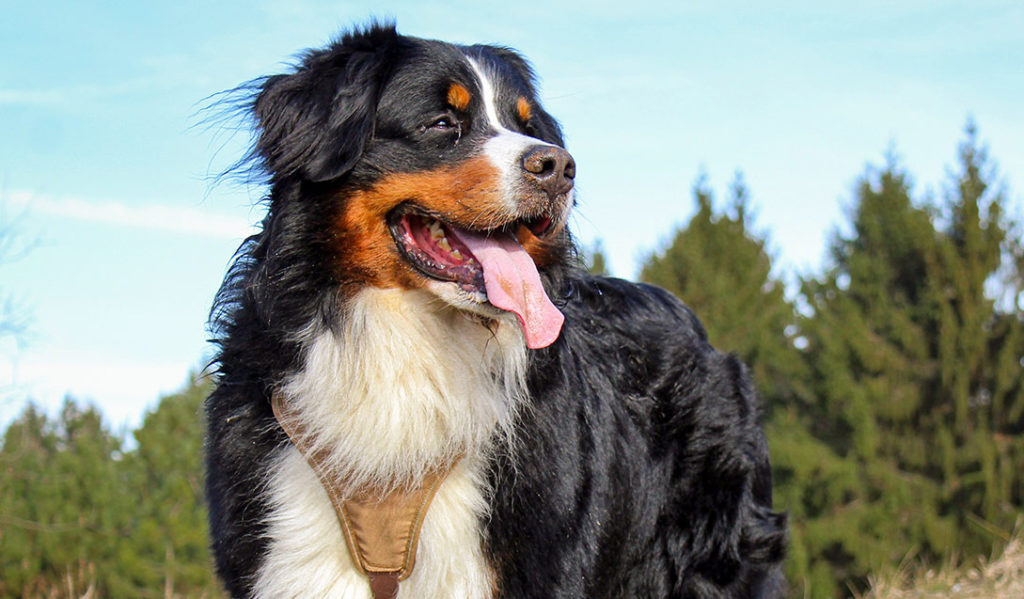
Giant Breeds
Great Danes, Saint Bernards, Irish Wolfhounds, and Newfoundlands face risks from prolonged immobility, joint issues, and circulatory problems.
Travel considerations:
- Dogs over 100 pounds may be better served by ground transportation
- If flying is unavoidable, discuss possible anti-inflammatory medication with your vet
- Use padded bedding in the crate to protect pressure points
- Practice having your dog lie still in restricted spaces for increasing periods before travel
- Schedule a post-flight massage or gentle exercise to restore circulation
- Allow extra recovery days at your destination before any strenuous activity
Senior Large Breeds
Large dogs age faster than small breeds, with many considered “seniors” by age 6–7. This brings additional concerns:
Travel considerations:
- Get a comprehensive geriatric exam before flying, including bloodwork
- Discuss arthritis or joint supplements with your veterinarian
- Consider orthopedic bedding for the crate to protect aging joints
- Pack any medications in your carry-on, never in checked luggage
- Plan shorter, more frequent exercise sessions at your destination
Anxious/High-Energy Working Breeds
German Shepherds, Belgian Malinois, Border Collies, and Rhodesian Ridgebacks may experience extreme stress or anxiety during confinement.
Travel considerations:
- Begin crate habituation months, not weeks, before flying
- Discuss appropriate anti-anxiety medication with your veterinarian
- Use calming pheromone sprays on bedding (test for sensitivity before travel)
- Pack mental stimulation toys that won’t present choking hazards
- Consider thundershirt-type garments for travel day
- Plan for extensive physical and mental exercise at your destination
Alternatives to Flying with Your Large Dog
Sometimes, flying just isn’t the best choice for your gentle giant. We generally recommend flying dogs in cargo only as a last-resort option. If you can’t easily fly with a large dog that is not a service animal, consider these alternatives:
- Professional pet transport services use climate-controlled vans with experienced handlers who understand large breed needs. They’re slower than flying but provide door-to-door service with regular breaks for exercise.
- Some Amtrak routes allow dogs up to 50 pounds for journeys under 7 hours. While this still excludes the biggest breeds, medium-large dogs might qualify.
- For total control over your dog’s experience, consider renting an RV for your journey. Yes, it takes longer, but your Great Dane can maintain their routine while traveling in comfort.
- For international travel, several cruise lines accommodate large dogs on specific routes. The Queen Mary 2 transatlantic crossing is famous for its kennel program that accepts dogs of all sizes.
Whether you choose air travel or an alternative, remember that your dog’s comfort and safety should be the priority. With proper planning, even the biggest dogs can join your adventures far from home.
Get your PSD Letter in three easy steps.

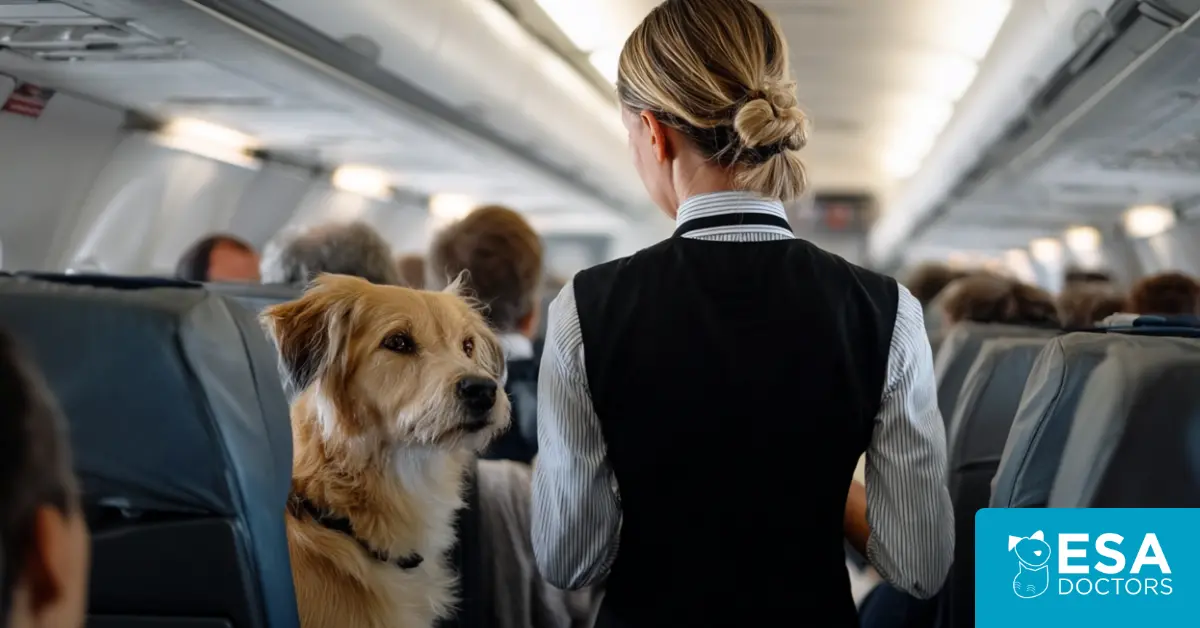

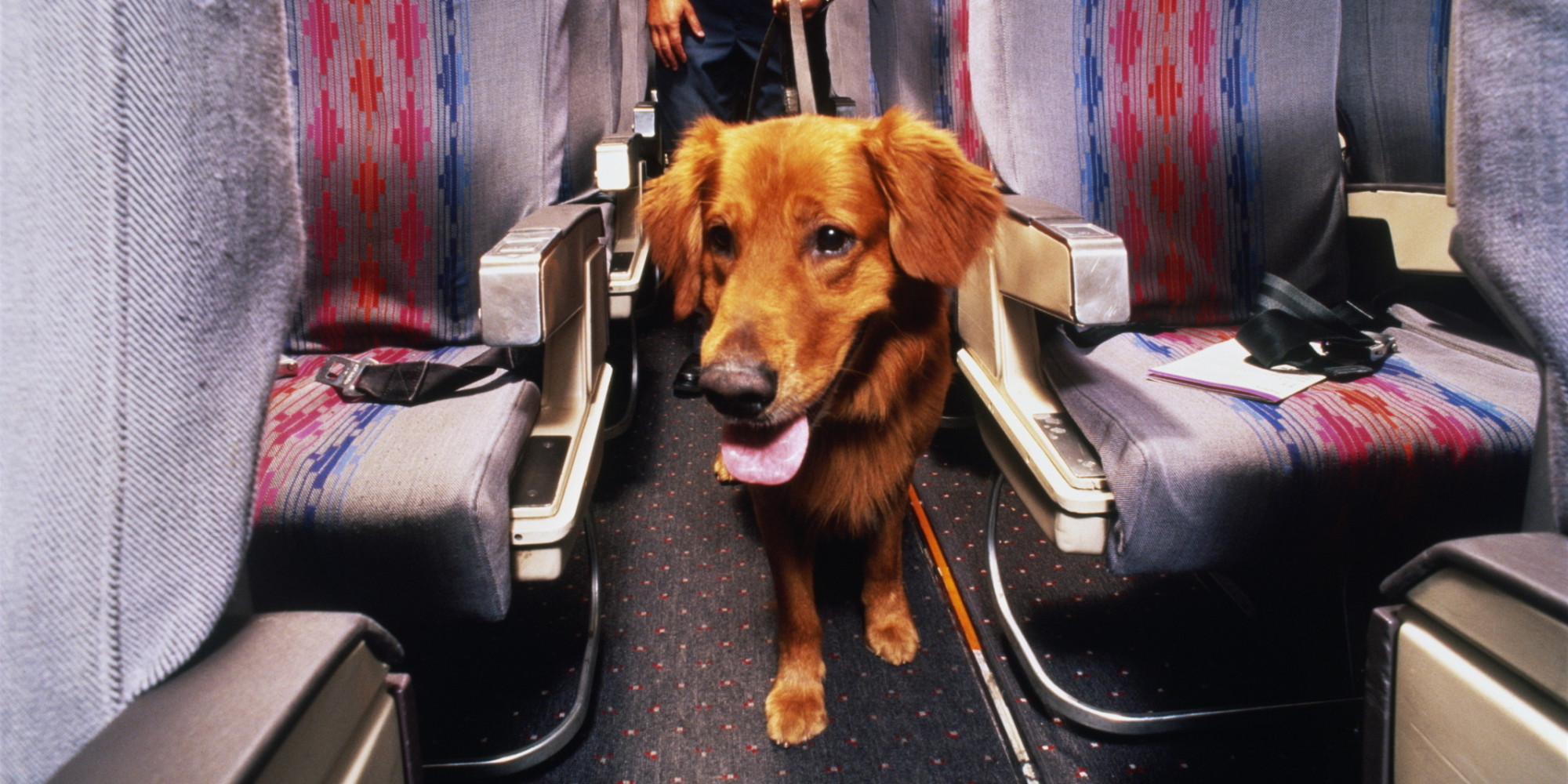
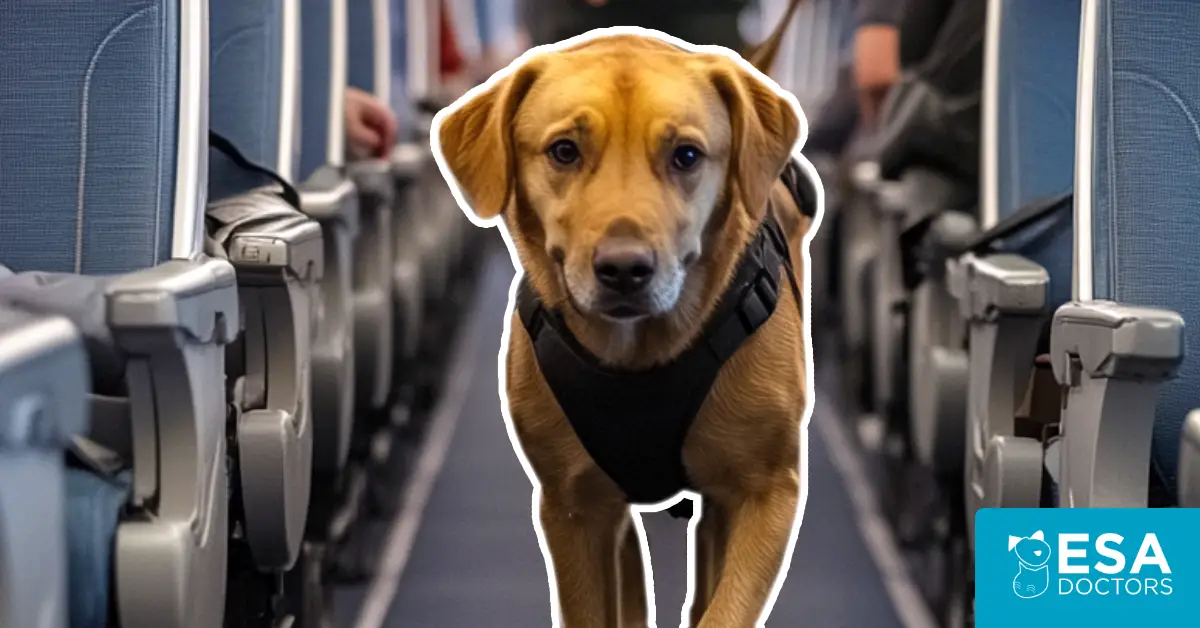
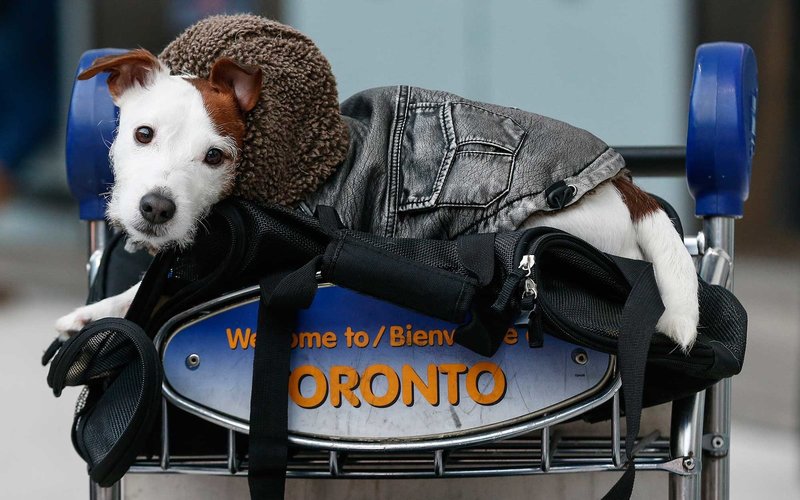
How can I fly with my ESA animal?
Unfortunately ESAs are generally no longer allowed on flights. Please see this article for more details: https://esadoctors.com/fly-with-dog/
Yiu need to stop selling fake esa and now fake service dog certificates so pets can fly. One of your pet esa letter dogs attacked another dog at walmart and my daughter got stuck 8n between these so called esa pets…you are hurting real service animals access for real trained certified service animals, you take their 69 dollars and they think 5hey can take these pets anywhere yiu need to inform people that esa are on valid for transportation and housing, these online certifications that are not from their treating physician do not allow them pets to go everywhere and fight and crap all over walmart. They need to know the laws and rules.
1. We do not sell “certificates” of any kind. 2. ESAs are no longer allowed on flights. 3. ESAs have never had the right to be in stores. Any ESA owner claiming they have the right to bring an ESA to a store like Walmart is mistaken. 4. We don’t issue certificates or ESA letters – we connect clients to licensed healthcare professionals that are able to independently provide ESA letters for qualifying clients.
Not looking to start a war here; however, as an owner of a service dog 🐕🦺 it NEVER CEASES to amaze me the number of unattended children, and yes adults too, that try and pet my dog when his leash CLEARLY SAYS DO NOT PET. I said all that to say this, like everything else in life we must take ownership of our actions as they do come with consequences.
People should certainly be more aware that service dogs are on duty and should not be treated like regular pets.
And does he fly for free with ESA letter from DR.
ESAs with valid documentation are allowed to fly for free on flights to/from the US.
Are large Emotional Support dogs allowed to fly at this time fro Ohio to California?
We recommend you check with the airline you are flying on to see what restrictions they have on ESA size. You can read more about the DOT’s guidelines on ESAs here: https://esadoctors.com/new-airline-rules-emotional-support-animals/
U.S. Airlines no longer accept ESA’s in cabin.